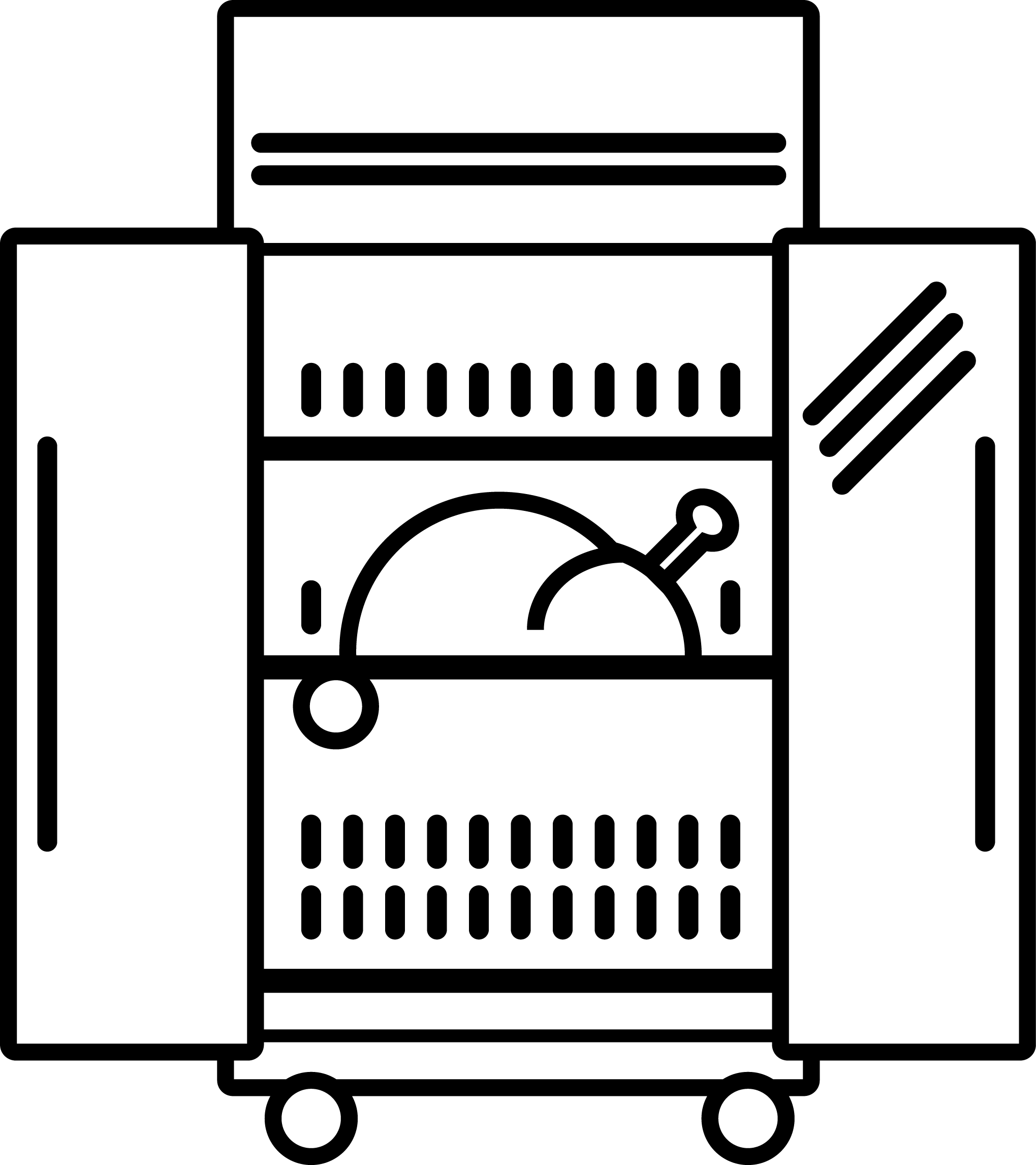

Don't Leave Food Safety to Chance
Home / Inspiration / Insights

Creating an outstanding dining experience for customers is both an art and a science. The art comes from chefs and business owners who are passionate about food, flavour and have flair for creating an outstanding customer experience. The science from the importance of getting aspects like food quality and safety right, particularly in regards to food temperature.
Food safety is almost the antithesis of what makes a great hospitality venue. The foundation of safe food is all about attention to detail, process and consistency. From handling to storing of fresh, raw and cooked food. Having a proven and well understood approach across your business, from initial purchase of ingredients through to correct food storage is critical to minimising food safety risks.
Key to the science of food preparation and storage is avoiding the so-called ‘danger zone’, where food at temperatures between 5°C and 60°C. At these temperatures bacteria is more likely to grow faster and the risk of food poisoning increases. This can be a real challenge in a hot, busy environment like a commercial kitchen. Bacteria can double in number in as little as 20 minutes between 5°C and 60°. In a commercial fridge, bacteria is prevented from growing if a tight temperature control of between 0 and 4°C is maintained inside the fridge.

Safe temperatures are 5°C or colder, or 60°C or hotter. Potentially hazardous food needs to be kept at these temperatures to prevent food-poisoning bacteria, which may be present in the food, from multiplying to dangerous levels. These bacteria can grow at temperatures between 5°C and 60°C, which is known as the temperature danger zone.
Places like kitchens and sculleries are often subject to high ambient temperatures. With all the activity and appliances running, the ‘room’ temperature can run in excess of 45°C. This poses a number of challenges in regards to refrigeration. Each type of fridge or freezer will have an optimum temperature that it is set to and will stay at while the door is closed and operating. However, once the door is opened, warm kitchen air rushes in replacing the lost cold air and bringing in moisture. This moisture can contain bacteria, which then condenses as it cools, falling like raindrops onto the food. As the cold air drops out the opened door, hot air flows in and the compressor and fans inside the fridge will stop to prevent further air from leaving, but the temperature inside the fridge still increases.
When the temperature is fluctuating frequently (for example when the door is opened and closed frequently) and the fridge is working hard to maintain its optimum level, the quality and potentially the safety of your food is at risk. By getting a handle on this and maintaining a more consistent temperature level in your fridge, you are guaranteeing a higher quality level of food and reducing the risk associated with poorly stored food.
One way to do this is to restrict the amount of times that a door is opened and closed. This reduces the time the food is exposed to warm air outside the fridge but is not a viable solution during busy service hours. Another way to look at the problem is to consider the accuracy of the temperature being recorded from inside the fridge – you will often see an increase in temperature when the door is opened. This is due to the cold air spilling out from the fridge and the temperature internally rising.
SKOPE has become aware over recent years of cheaper imported products entering the market that appear not to display a temperature increase on the controller. This may be down to the placement of the temperature probes inside the fridge and where the temperature is being logged. If the sensor or probe is placed where the cold air is spilling out (rather than where the returned air is circulating inside the fridge), you will see a decrease on the temperature display when the door is opened. However, this is not only impossible, it is misleading and dangerous. Customers can easily be fooled into believing their fridge is working as the temperature reading on the controller is moving up and down, but not necessarily understand what this means for food safety and safe product temperatures.
SKOPE’s test objective is to guarantee average temperature readings inside the fridge within 0.5 accuracy. Our state-of-the art environmental test chamber has significantly increased testing capacity at SKOPE and is continually improving accuracy in temperature control for food safety.
SKOPE sets high standards to ensure customer expectations are exceeded. We design products that are made to last, with a focus on tight temperature control and rapid pull down of temperature, in the harshest of climates. This is proven in our latest ActiveCore technology. Below, is a graph taken from the MEPS (Minimum Energy Performance Standards) report, showing that an ActiveCore 2 door bottom mounted fridge not only has incredible temperature consistency inside the fridge but consistently holds temperature at below 5°C. The report measures the thermal properties of up to 476 MEPS packs (M packs) using dataloggers and probes to record the core temperature of each of pack throughout the cabinet. The M packs represent the same properties of perishable product, and comply with the ISO Standards for Performance Tests on Household and Commercial Appliances.
The test data shows internal temperature over a 24 hour period, at Climate Class 3 (Minimum Energy Performance Standards) in testing conditions of 25°C – 60% Relative Humidity. The graph lines show that the product remains between -1°C and +5°C for the duration of the test with minimal fluctuations and minimal energy consumption.

SKOPE’s testrooms and equipment is calibrated by Air New Zealand Engineering every 12 months. This includes dataloggers, room controllers and humidifiers.Test packs are measured & weighed on regular a basis to ensure they conform to the 5% mass limits and size tolerances.

Air is the most commonly used heat transfer in refrigeration systems. We typically remove heat from a refrigerated space by circulating cooled air throughout the fridge. A good airflow pattern is critical to an even and consistent spread of chilled air onto a product. In SKOPE fridges, chilled air is pushed directly onto the product. It is a commercial refrigerator’s job to keep the product inside in optimal conditions for as long as possible, to ensure food safety. Many “market- standard” fridges fall well short of this objective. 
A poor airflow pattern will result in fluctuations in a product’s core temperature affecting its flavour, quality and nutritional integrity. For food to remain safe, the internal temperature must not go higher than 5°ᶜ. Many inferior fridges can’t maintain these tight temperatures during busy periods and seasonally warmer temperatures, even though the temperature display may say otherwise. A good airflow pattern will keep tight cabinet temperatures, regardless of the frequency of outside fluctuations.
The selection of a fridge depends on several factors such as the type of food being stored, the volume of meals being prepared daily, and the frequency of the food being delivered to patrons (i.e. how many services being managed). Before selecting refrigeration equipment, check out our Guide to Commercial Refrigeration or talk to your local SKOPE representative, who can give you helpful advice.
Selecting the wrong type of fridge can make it hard to avoid that danger zone which significantly increases your risk of unsafe food.
What are your best options for different types of refrigeration to promote safe food?
SKOPE have 50 years’ experience keeping your drinks cold and food safe and are market leaders in energy efficient products. You can depend on us for the best in refrigeration and our unique ActiveCoreTM technology can help lower your operating costs. We offer the ability to customise the solutions to suit your requirements and you can rest easy with our superior warranty protection.
Want to understand more about the science of keeping food safe in your kitchen? We’ve prepared an eBook called 'Why bad food is not cool; a practical guide to NOT destroying your kitchen’s reputation'.
End / Previous Story

Don't Leave Food Safety to Chance
Protect the Reputation of Your Business Now

Enter your details to download our eBook on Food Safety, 'Why bad food is not cool'
Which Delivery Model is Best for Your Business?
Every business is different, which makes choosing the right model for delivery an imp…
Maha, Melbourne
When Shane Delia renovated Maha on the restaurant’s 10th Anniversary he insisted on S…
“Choosing SKOPE was about design aesthetics, functionality, and also hygiene. But we also wanted to make sure we chose a product that we could clean easily and was from a brand that had a really fabled reputation founded on reliability.”
The Australian Energy Crisis and How Your Refrigeration Choice Can Help
With factors such as generator shortfalls, the war in Ukraine and rising utility cost…
Your Guide to Commercial Refrigeration
Chu the Phat, Brisbane
Located in South Brisbane’s up-and-coming Fish Lane is Chu the Phat, a vibrant and co…
Why Now was the Right Time for a 5 Year Full Warranty
SKOPE may be known as one of the world’s leading manufacturers of commercial refriger…
Which Delivery Model is Best for Your Business?
Every business is different, which makes choosing the right model for delivery an imp…
What You Can Learn from the Hotel Industry’s Take on Asset Management
Planning is everything when it comes to future proofing revenue
SKOPE Funding Market Update April 2023
Australia and New Zealand are currently in the midst of a cost-of-living crisis, with…
Just How Safe are Natural Refrigerants? Let Me Explain
One of the biggest roadblocks to cheaper, greener commercial refrigeration are persis…
The Australian Energy Crisis and How Your Refrigeration Choice Can Help
With factors such as generator shortfalls, the war in Ukraine and rising utility cost…
“SKOPE is a very important part of the picture because we need concepts that work on many levels – our venues need to be labour-efficient and maintenance-efficient, and we need the confidence that the equipment we choose can be relied upon.”
“Choosing SKOPE was about design aesthetics, functionality, and also hygiene. But we also wanted to make sure we chose a product that we could clean easily and was from a brand that had a really fabled reputation founded on reliability.”
“SKOPE has worked extremely hard to develop their products and the technology that goes into them.”
“The whole can-do attitude that came from the customs team was amazing because I kept throwing things at them.”
“The service and advice we've received from SKOPE is always outstanding and knowledgeable.”
“We needed a refrigeration solution that could keep up with the fast pace and what SKOPE provided was bullet proof.”
Maha, Melbourne
When Shane Delia renovated Maha on the restaurant’s 10th Anniversary he insisted on S…
Chu the Phat, Brisbane
Located in South Brisbane’s up-and-coming Fish Lane is Chu the Phat, a vibrant and co…
Ortolana, Auckland
Located in Auckland’s Britomart, Ortolana is best described as a neighbourhood dining…
Milse, Auckland
Exquisite cakes, pastries and decadent degustation menus make Milse a must-visit for …
Jones the Grocer / Dubai
The Locations
Tuahiwi Marae, Christchurch
Modern Solutions for Traditional ValuesLocated in a small rural village between Rangi…
Your Guide to Commercial Refrigeration
Case Study: Whet Drinking Room
Case Study: Gordon River Cruises
Case Study: Brunetti's
Case Study: Bennelong
We use cookies to improve your browsing experience, provide personalised content, and analyze site traffic. By using our site, you acknowledge that you have read and understood our use of cookies. Choose to accept or decline our use of cookies by clicking the buttons below. If you decline, we will not use cookies on our site. However, some features may not be available to you.

